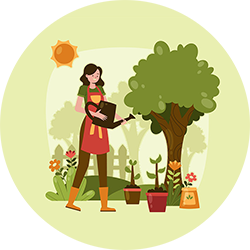Grow These Plants to Transform Your Garden into a Butterfly Haven

Butterflies add color and life to any garden, but attracting them takes more than just flowers. To truly support them, you’ll need to think beyond beauty and offer the right mix of plants. In this guide, you’ll discover exactly what butterflies need and which plants will turn your garden into a thriving, fluttering habitat.
Understanding what butterflies need
To attract butterflies, it helps to understand what they need at every stage of life. Caterpillars require specific plants to feed on, while adult butterflies depend on nectar for energy. Beyond food, butterflies also need sunlight, shelter from wind, and places to rest and drink.
A successful butterfly garden should include both nectar and host plants. This ensures your garden supports not only visiting butterflies but also encourages them to lay eggs. The more complete the habitat, the more likely butterflies are to stay and return.
Providing a safe and welcoming environment also means limiting chemical use. Many pesticides and herbicides can harm butterflies and caterpillars. Natural gardening practices help keep your space butterfly-safe.
Native plants: the foundation of a butterfly-friendly garden
Butterflies have evolved alongside native plants, making them the best choice for a healthy garden. Native species are often more attractive to local butterflies than non-native ornamentals. They also require less water and maintenance once established.
If you’re unsure which native plants are suitable, local extension offices or native plant societies often have region-specific lists. Look for wildflowers that bloom across different seasons to provide a steady food source. These plants also tend to support native bees and other beneficial insects.
Some examples of dependable native plants include purple coneflower, butterfly weed, and goldenrod. These not only draw butterflies but also add vibrant color to your garden.
Top nectar plants butterflies love
Nectar plants are essential for feeding adult butterflies. These flowers produce sweet liquid that butterflies sip through their proboscis, giving them energy for flying, mating, and laying eggs. A garden full of nectar-rich plants will attract a steady stream of colorful visitors.
Perennials like bee balm, blazing star, black-eyed Susans, and joe-pye weed are reliable nectar sources. They come back year after year and bloom at different times, keeping the buffet open throughout the season. Planting in clusters helps butterflies find them more easily.
Annuals also play a role in supporting butterflies. Zinnias, cosmos, lantana, and marigolds are easy to grow and produce blooms quickly. These can be tucked into garden beds or grown in containers to fill gaps and extend the blooming season.
Host plants that support caterpillars
While nectar plants attract butterflies, host plants are what make them stay. These are the plants where butterflies lay their eggs and where caterpillars feed until they pupate. Each species of butterfly has specific plants it depends on.
Monarchs rely exclusively on milkweed, while black swallowtails prefer parsley, dill, and fennel. Painted ladies use thistles and mallows, and pearl crescents favor asters. Including these host plants in your garden encourages full life cycle activity and increases your chances of seeing more butterflies over time.
Host plants may look a little rough once caterpillars start munching, but that’s a sign of success. Avoid trimming or removing plants too early, and try to plant extra so there’s enough to go around.
Designing your butterfly garden for maximum impact
A well-designed butterfly garden isn’t just functional it’s also beautiful. Group similar plants together in clusters to create visual appeal and make it easier for butterflies to find food. Use layers of height, mixing tall flowers like joe-pye weed with low-growing plants such as creeping thyme or alyssum.
Ensure there’s something blooming from early spring into fall. Succession planting and mixing annuals with perennials help keep nectar available all season. This also attracts a broader range of butterfly species, since different butterflies appear at different times of year.
Be mindful of what you apply to your garden. Avoid using synthetic pesticides and fertilizers that could harm insects. Instead, opt for compost, organic mulches, and manual pest control to keep your garden thriving and pollinator-friendly.
Extra touches that make a difference
Butterflies don’t just need food they also need comfort. A shallow dish filled with moist sand or pebbles can act as a puddling station, where butterflies sip minerals and water. Be sure to keep it filled and clean to encourage regular visits.
Adding a few flat stones in sunny spots gives butterflies a place to bask and warm their wings in the morning. This helps them stay active and improves their chances of survival. Windbreaks, such as hedges or fences, can shield delicate wings from strong gusts and create a more welcoming space.
Even small additions like these can make your garden feel more like home to butterflies. It’s often the combination of thoughtful planting and simple features that makes the biggest difference.
Conclusion
Creating a butterfly haven isn’t about planting the most flowers it’s about planting the right ones. By including both nectar-rich blooms and specific host plants, you support every stage of the butterfly’s life. With a few thoughtful choices, your garden can become a reliable stopover and maybe even a permanent home for these graceful pollinators.
